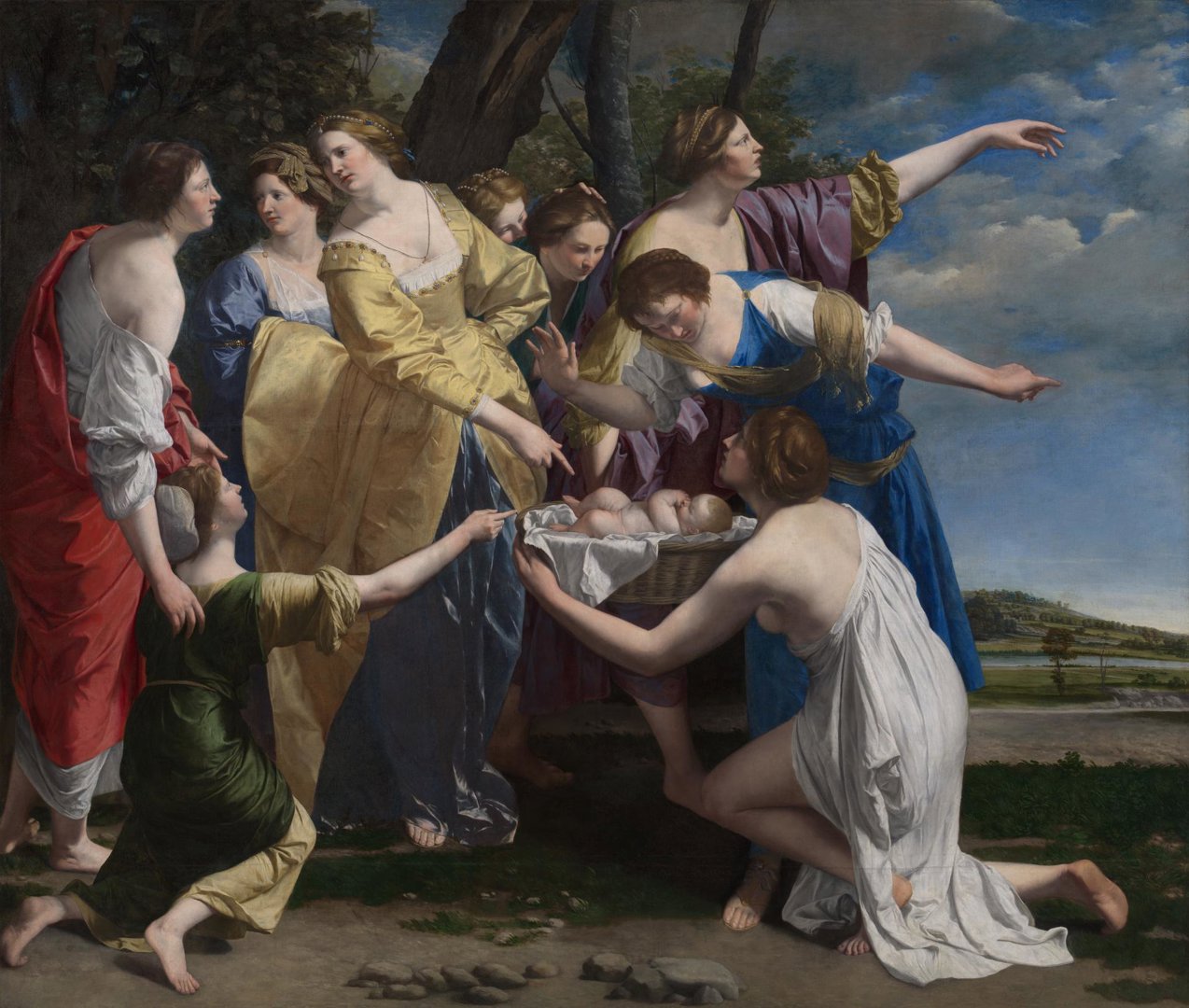Pharoah has decreed that all new-born Hebrew baby boys must be killed.
Desperate to save her child, a mother hides her baby in a basket, among the bulrushes.
That baby is Moses. His sister, Miriam, watches on.
Pharoah’s daughter comes to the Nile to bathe accompanied by her ladies-in-waiting. She finds a baby, takes pity on it, and wants to take it back to the palace to look after it.
Miriam offers to help find someone to nurse the baby. That someone is her mother… Moses’s mother.
Gentileschi has chosen the most dramatic moment in this Old Testament story. Pharoah’s daughter, in a sumptuous golden silk dress, points to the baby she has just discovered, while two of her finely dressed attendants point to the spot where he was found. Miriam, in a much simpler green toga, kneels, offering her suggestion of help. Behind her, with a hand gently on her shoulder, stands her mother, who will soon be reunited with Moses as his nursemaid.
Gentileschi may not be as widely known today as his daughter Artemisia, whose Self Portrait as Saint Catherine of Alexandria hangs in the Gallery, but he is one of the most interesting figures of the Italian Baroque. He had an international career, counting aristocrats and monarchs among his patrons. Together with Van Dyck and Rubens, he was one of the leading international painters who came to work in London for King Charles I.
Charles commissioned this painting in the 1630s as a gift for his wife, Queen Henrietta Maria, probably to celebrate the birth of their son, the future Charles II. It was made to decorate the Great Hall, one of Inigo Jones's most beautiful buildings at the Queen's House in Greenwich.
The painting is like a frozen tableau of choreographed movement; each character acts their part with stylised gestures. The focus of all their attention (and ours) is the baby; placed not in the centre of the picture, but at a point where the kneeling bather's shoulder and bent arm frame the basket.
Outstretched arms and pointing fingers lead the eye around the painting; the many diagonals intersecting to form upright and inverted triangles. This structure 'locks' the figures into place while leaving Gentileschi enough freedom to vary the women's poses, gestures, and expressions. Looking at these ancient figures dressed in contemporary 17th-century fashion, it's not hard for us to imagine the ladies of Charles and Henrietta’s court, in their equally luxurious dresses, forming a similar tableau as entertainment.
Help save this masterpiece for the nation
‘The Finding of Moses’ has been on loan to the Gallery since 2002 where it has been at the heart of our Italian Baroque display. We have just three weeks to raise the final £2 million to purchase this masterpiece and keep it on free display, for everyone, forever.


